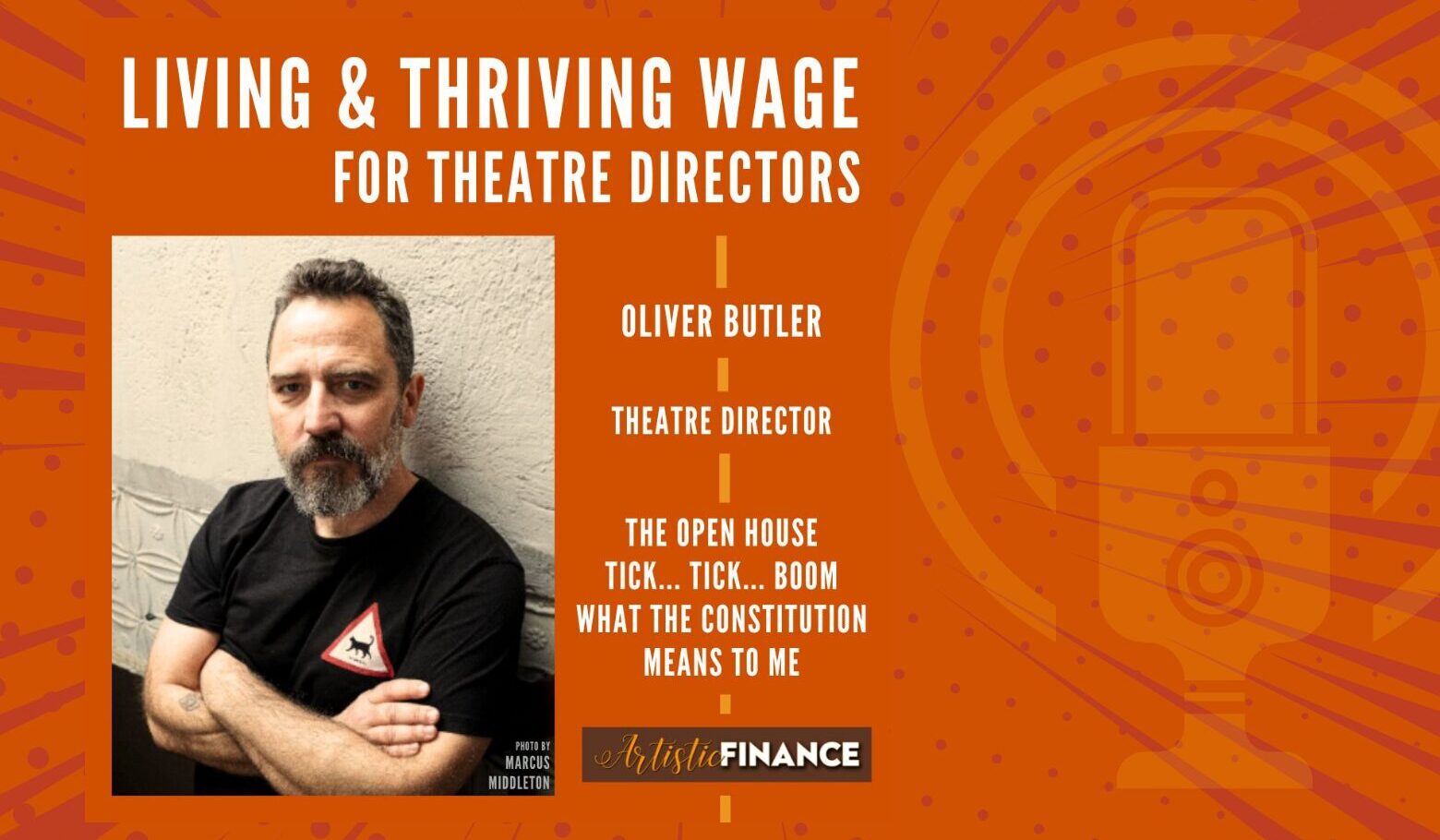Oliver Butler: Living and Thriving Wage for Theatre Directors

In this episode of Artistic Finance, host Ethan interviews theater director Oliver Butler about the state of pay for theater directors, particularly in New York City’s nonprofit sector. They discuss director fees, industry-wide pay disparities, the barriers to negotiating better wages, and potential solutions to create a more equitable and sustainable career path for directors and designers. Below is an insight into some of the topics covered in this Podcast.
What sparked this conversation about director pay?
Oliver Butler’s three Instagram videos on director fees at nonprofit theaters prompted this discussion. He highlighted that most theaters pay only the minimum required by the Stage Directors and Choreographers Society (SDC), which often results in directors earning below minimum wage when their hours are accounted for. He was shocked to discover that in the past 10 years, no directors had successfully negotiated above the minimum rate in New York City. This led him to advocate for transparency and reform in how directors are compensated.
How much are directors typically paid at nonprofit theaters, and what does that break down to in practical terms?
For a second-stage production, Oliver was offered $7,000, while a main-stage production typically pays around $13,000. Given that directing a play requires at least three months of work (including prep, rehearsals, and post-production), this equates to approximately $28,000 to $52,000 annually if a director worked back-to-back productions all year. When broken down hourly, these rates can fall below the minimum wage in New York City, making it financially unsustainable for many directors to continue in the industry.
Why can’t directors negotiate higher fees?
Most nonprofit theaters employ a favored nations clause, which means no one director can be paid more than another. This clause, while intended to ensure fairness, effectively caps director pay at the minimum negotiated by the union. Oliver discovered that despite language in SDC contracts stating that nothing prevents individuals from negotiating higher, in practice, every director is paid the same base amount. This creates a system where fees remain stagnant, making it nearly impossible for directors to secure a living wage.
What impact does low director pay have on the industry?
Low wages disproportionately affect mid-career directors, many of whom leave the profession due to financial instability. This results in a talent drain where only those with independent financial support (e.g., trust fund recipients or those with other sources of income) can afford to sustain a career in theater. Furthermore, the lack of financial stability discourages diverse voices from entering and remaining in the industry, undermining efforts toward equity and inclusion.
What solutions could help improve director pay?
Oliver suggests several actionable steps:
- Track Hours & Advocate for Higher Pay: Directors should document their hours and always ask for higher fees, even if negotiations seem futile. If enough people push back, institutions will eventually have to adjust.
- Annualize Fees for Context: Rather than accepting lump-sum payments, directors should reframe their salaries in terms of yearly earnings and compare them to other full-time employees at the theater.
- Engage in Union Activism: Directors must become more involved in SDC negotiations to push for a large-scale course correction rather than incremental percentage increases.
- Increase Transparency: Artists should use platforms like GuideStar to research nonprofit financial reports, exposing pay disparities between artistic leadership and freelancers.
- Encourage Institutions to Prioritize Equity: Theater boards and artistic directors must actively commit to raising director fees as part of their budgeting process. Some theaters, such as Soho Rep, Playwrights Horizons, and New York Theater Workshop, have already taken steps to pay above the minimum.
Key Takeaways from the Episode
- Director Pay is Unsustainably Low
Nonprofit theaters in New York City often pay directors between $7,000 (second-stage) and $13,000 (main-stage) per show, which, when annualized, translates to below or barely at a living wage. - Favored Nations Clause Prevents Negotiation
Many theaters enforce a “favored nations” clause, which means directors are all paid the same minimum rate, effectively preventing them from negotiating higher fees. - Mid-Career Directors are Leaving the Industry
Due to financial instability, many talented directors exit the field, leaving only those with independent financial support to sustain a career in theater. - Lack of Transparency in Theater Pay
Many directors and designers are unaware of how much others are making, and nonprofit theaters rarely disclose the disparity between executive salaries and artist fees. - Solutions to Improve Pay Equity
Directors should track their hours, push for higher pay, become more involved in union activism, research theater financials via platforms like GuideStar, and advocate for budget adjustments that prioritize artist wages. - Some Theaters are Leading the Way
Institutions like Soho Rep, Playwrights Horizons, and New York Theater Workshop have committed to paying directors above the minimum, proving that financial equity is possible with the right prioritization.
Listen to this Episode on:
Website / Spotify / Apple Podcasts / YouTube
This episode of the Artistic Finance podcast is hosted by Ethan Steimel.
Back to Home
Editor's Note: At StageLync, an international platform for the performing arts, we celebrate the diversity of our writers' backgrounds. We recognize and support their choice to use either American or British English in their articles, respecting their individual preferences and origins. This policy allows us to embrace a wide range of linguistic expressions, enriching our content and reflecting the global nature of our community.
🎧 Join us on the StageLync Podcast for inspiring stories from the world of performing arts! Tune in to hear from the creative minds who bring magic to life, both onstage and behind the scenes. 🎙️ 👉 Listen now!
